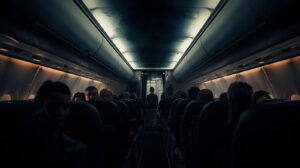In the realm of travel, few experiences evoke such a complex blend of anticipation and anxiety as boarding an airplane. The fear of flying, scientifically known as aviophobia, affects millions worldwide. It is a paradox of modern life: the marvel of human ingenuity enabling us to traverse the globe at speeds and altitudes once deemed impossible, yet, for many, it’s a venture fraught with apprehension.
Understanding the science behind this fear can be the first step toward overcoming it. In this article, we delve into the intricate workings of fear as it relates to air travel, offering insights and strategies to ease the journey.
Fear of flying often stems from a lack of control. In the cabin, passengers surrender control to pilots, cabin crew, and the aircraft itself, an act that can induce anxiety in individuals accustomed to having agency over their environment. For others, the fear is rooted in the unknown—mechanical failures, turbulence, or severe weather, all elements beyond their influence.
Our fear responses are deeply embedded in the human psyche, a legacy of our evolutionary past. While the threats we face today differ vastly from those of our ancestors, our brains are hardwired to react swiftly to perceived dangers. This survival mechanism, known as the fight-or-flight response, can be triggered by the unfamiliar sensations of flight, even though air travel is statistically one of the safest modes of transportation.
To demystify the fear of flying, understanding the technological marvel that is the modern aircraft can be reassuring. Aircraft are meticulously engineered to withstand a range of scenarios. Redundancy systems, rigorous maintenance checks, and pilot training programs ensure that safety is paramount. Familiarizing oneself with these aspects can provide a sense of security.
Turbulence is often misconceived as a sign of danger. However, it is a natural atmospheric phenomenon. Pilots are trained to handle turbulence, and aircraft are designed to endure it without compromising safety. Knowing this can help diminish the fear associated with unexpected bumps and jolts during a flight.
Preparation can mitigate anxiety. Consider visiting the airport prior to your flight to familiarize yourself with the environment. Engage with informative materials about flight safety and aircraft operations. Knowledge can empower and reduce fear.
Mindfulness practices, such as deep breathing, meditation, and visualization, can be invaluable tools in managing anxiety. These techniques promote relaxation and help ground individuals in the present moment, diminishing the hold of fear.

For some, professional guidance may be necessary. Cognitive-behavioral therapy (CBT) is an effective approach for addressing aviophobia. Therapists can work with individuals to reframe negative thoughts and develop coping strategies tailored to their specific concerns.
For travel agents and lifestyle influencers, offering clients experiences that transcend the ordinary can be transformative. Emphasizing authenticity and local culture over spectacle can create lasting memories. Encourage travelers to seek destinations that offer a sense of place and connection, where time seems to slow and moments are savored.
Hotel managers can leverage storytelling to attract guests who value genuine experiences. By weaving narratives that highlight local traditions, history, and the unique character of the surroundings, hotels can foster a deeper connection between guests and their destinations.
Fear of flying is a common, yet conquerable, obstacle on the path to enriching travel experiences. By understanding the science behind the fear and employing practical strategies to manage it, travelers can unlock the joys of air travel. For those in the travel industry, embracing the nuances of fear and fostering authentic connections can create meaningful, memorable journeys that resonate with the soul.
As you prepare to embark on your next adventure, remember that the world is vast and full of wonders waiting to be explored. With courage and understanding, the skies can become a gateway to discovery, rather than a barrier to it.


